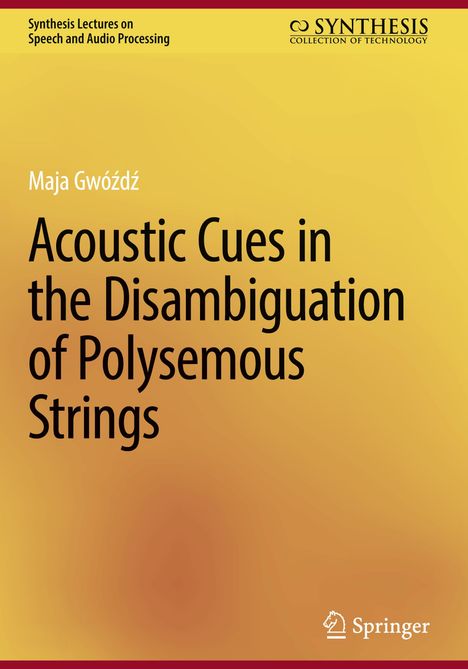Maja Gwó¿d¿: Acoustic Cues in the Disambiguation of Polysemous Strings
Acoustic Cues in the Disambiguation of Polysemous Strings
Buch
lieferbar innerhalb 2-3 Wochen
(soweit verfügbar beim Lieferanten)
(soweit verfügbar beim Lieferanten)
EUR 54,75*
Verlängerter Rückgabezeitraum bis 31. Januar 2025
Alle zur Rückgabe berechtigten Produkte, die zwischen dem 1. bis 31. Dezember 2024 gekauft wurden, können bis zum 31. Januar 2025 zurückgegeben werden.
- Springer Nature Switzerland, 01/2024
- Einband: Gebunden, HC runder Rücken kaschiert
- Sprache: Englisch
- ISBN-13: 9783031466793
- Bestellnummer: 11729757
- Umfang: 116 Seiten
- Nummer der Auflage: 24001
- Auflage: 1st ed. 2024
- Gewicht: 385 g
- Maße: 246 x 173 mm
- Stärke: 13 mm
- Erscheinungstermin: 5.1.2024
- Serie: Synthesis Lectures on Speech and Audio Processing
Achtung: Artikel ist nicht in deutscher Sprache!
Klappentext
This book provides an analysis of acoustic features of polysemous strings and an implementation of a speech disambiguation program based on the phonetic information. Throughout the book, the term polysemous string refers to idioms with plausible literal interpretations, restrictive and non restrictive relative clauses, and the same expressions used as quotations and appearing in a non quotational context. The author explains how, typically, context is sufficient to determine the intended meaning. But there is enough evidence in psycholinguistic and phonetic literature to suspect that these superficially identical strings exhibit different acoustic features. In the experiment presented in the book, the participants were asked to read short excerpts containing corresponding elements of polysemous strings placed in the same intonational position. The acoustic analyses of ditropic pairs and subsequent statistical tests revealed that there is almost no difference in the duration, pitch, or intensity in literal and figurative interpretations. However, the analysis of relative clauses and quotations demonstrated that speakers are more likely to use acoustic cues to differentiate between the two possible readings. The book argues that the acoustic analysis of polysemous phrases could be successfully implemented in designing automatic speech recognition systems in order to improve their performance in disambiguating polysemous phrases.Analyzes acoustic features of polysemous strings and an implementation of a speech disambiguation program
Includes evidence that superficially identical strings exhibit different acoustic features
Argues that acoustic analysis of polysemous phrases can be successfully implemented in automatic speech recognition


